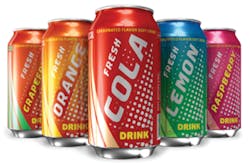Phosphates
Department: Contaminant of the month Title: Sub Title: By:
What it is:
- Phosphates are sometimes contaminants in water and sometimes beneficial additives; it all depends how and where they are encountered.
- Phosphates are derivatives of phosphoric acid (H3PO4), which contain phosphorus and oxygen and exist in inorganic and organic forms.
- Often found in soil and rocks, inorganic phosphates are mined and used as fertilizers as well as in detergents and as feedstock for chemical syntheses as well as components in many soft drinks.
- They are a universal nutrient and, along with nitrates, are taken in by plants and animals and used to construct cellular matter.
- Phosphate linkages are essential components of DNA and RNA because they connect the sugar and organic bases to produce the helix structure.
- Natural waters contain a phosphorus concentration of approximately 0.02 parts per million (ppm).
- Phosphates will sequester metal cations so elevated phosphate levels will interfere with the coagulation process in drinking water treatment plants.
- Zinc or sodium orthophosphates or phosphoric acid are often added to the drinking water at public water systems as a corrosion inhibitor to prevent leaching of lead and copper from pipes and fixtures. The phosphate metal salt forms a protective coating of insoluble mineral scale on the inside of service lines and household plumbing as well as in commercial water applications and significantly reduces leaching of those metals.
Occurrence:
- Most phosphates enter waterways through plants and rocks.
- They can also enter waterways through manmade sources, which include human sewage discharges, agricultural fertilizer runoff, manufacturing and detergents.
Health effects:
- Phosphates are safe to ingest at reasonable levels. They are important complexed components of all plant and animal based foods that we consume because they are components of all cells. The Food and Drug Administration (FDA) has concluded that inorganic phosphates as food additives are GRAS (generally recognized as safe).
Environmental effects:
- The principal problems caused by excess phosphate are as a nutrient that, along with nitrogen/nitrates, can cause excess algal growth and eutrofication of water bodies. As the algae proliferate, they eventually die and consume dissolved oxygen in the water as they are degraded. Water bodies can be phosphorous-limited or nitrogen-limited, meaning that the component in the smallest amount will control the extent of eutrofication because both are needed for cell growth.
Water treatment:
- Coagulation and filtration using iron salts is commonly applied to reduce phosphate levels in drinking water or wastewater.
Regulation:
- In 1986, the Environmental Protection Agency (EPA) established the following recommended criteria for phosphorus: No more than 0.1 mg/L for streams that do not empty into reservoirs; no more than 0.05 mg/L for streams discharging into reservoirs; and no more than 0.024 mg/L for reservoirs.
Sources: UCD ExtoxNet FAQ Team, U.S. Environmental Protection Agency, Water Research Center.
Water Technology would like to thank Dr. Joseph Cotruvo for reviewing this information and providing additional content. Dr. Cotruvo is president of Joseph Cotruvo and Associates, LLC, Water, Environment and Public Health Consultants. He is a former director of the U.S. EPA Drinking Water Standards Division.
